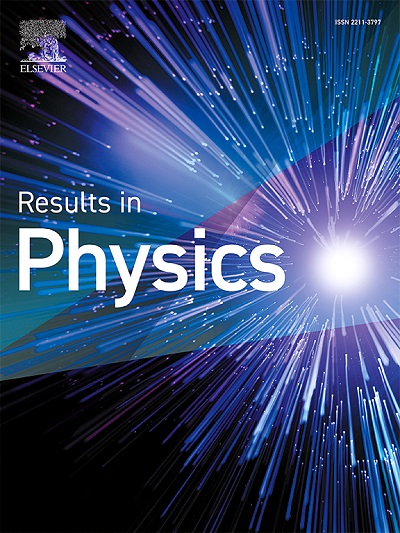InP/ZnS core/shell quantum dots: Synthesis, characterization and their application in fullerene derivative based flexible solar cells
IF 4.4
2区 物理与天体物理
Q2 MATERIALS SCIENCE, MULTIDISCIPLINARY
引用次数: 0
Abstract
Herein, we report on the synthesis and characterization of p-type semiconductor indium phosphide/zinc sulphide (InP/ZnS) core/shell quantum dots (QDs) prepared via a simple solvothermal method and their potential application in bulk heterojunction (BHJ) flexible solar cell (SC). The BHJ SC composed of donor–acceptor (D-A) configuration at nanoscale provides larger interfacial junction area throughout the bulk volume of the photo-absorber D-A blend that facilitates excitons to efficiently dissociate within the bulk layer at D-A interface. Hence, InP/ZnS core–shell QDs and a fullerene derivative – phenyl C61 butyric acid methyl ester (PCBM) – are used as hybrid inorganic–organic D-A materials, respectively, to fabricate Ag/LiF/InP/ZnS-PCBM/P3HT/ITO/PET BHJ flexible SC. Indium tin oxide (ITO) coated on polyethylene terephthalate (PET), poly(3-hexylthiophene) (P3HT), lithium fluoride (LiF) and silver (Ag) are employed as a flexible substrate, hole transport layer (HTL), electron transport layer (ETL) and counter electrode, respectively. Photovoltaic (PV) properties of the fabricated BHJ flexible SC are studied under standard testing conditions (STC) i.e., 25 0C, 1.5 AM global and 100 mW/ irradiation, which exhibit fill factor (FF) of 59 ± 0.02 % and power conversion efficiency (PCE) of 4.22 ± 0.05 %. Also, the heterojunction characteristics are investigated in dark condition (0 lx) to find series resistance (Rs), ideality factor (n), and reverse saturation current (I0). X-ray diffraction (XRD), atomic force microscopy (AFM), scanning electron microscopy (SEM) and ultraviolet–visible (UV–vis) spectroscopy are performed to further investigate the properties of InP/ZnS-PCBM thin films. Transmission electron microscopy (TEM) image of InP/ZnS core/shell QDs confirmed the successful synthesis of QDs having an average size of 5 ± 1 nm. The InP/ZnS-PCBM D-A photo-absorber layer reveals its potential as one of good candidates for high performance BHJ flexible SCs.
求助全文
约1分钟内获得全文
求助全文
来源期刊

Results in Physics
MATERIALS SCIENCE, MULTIDISCIPLINARYPHYSIC-PHYSICS, MULTIDISCIPLINARY
CiteScore
8.70
自引率
9.40%
发文量
754
审稿时长
50 days
期刊介绍:
Results in Physics is an open access journal offering authors the opportunity to publish in all fundamental and interdisciplinary areas of physics, materials science, and applied physics. Papers of a theoretical, computational, and experimental nature are all welcome. Results in Physics accepts papers that are scientifically sound, technically correct and provide valuable new knowledge to the physics community. Topics such as three-dimensional flow and magnetohydrodynamics are not within the scope of Results in Physics.
Results in Physics welcomes three types of papers:
1. Full research papers
2. Microarticles: very short papers, no longer than two pages. They may consist of a single, but well-described piece of information, such as:
- Data and/or a plot plus a description
- Description of a new method or instrumentation
- Negative results
- Concept or design study
3. Letters to the Editor: Letters discussing a recent article published in Results in Physics are welcome. These are objective, constructive, or educational critiques of papers published in Results in Physics. Accepted letters will be sent to the author of the original paper for a response. Each letter and response is published together. Letters should be received within 8 weeks of the article''s publication. They should not exceed 750 words of text and 10 references.
 求助内容:
求助内容: 应助结果提醒方式:
应助结果提醒方式:


